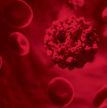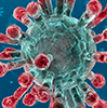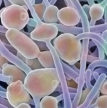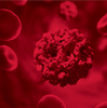- Infectious diseases ×
-
Strep A: what you need to know
December 6, 2022
With a notable increase in serious Step A cases in the UK this year and concern over the risk to young children, we asked three expert Microbiology Society members to answer some common questions about Strep A.
-
JMM Editor’s Choice: an in vitro model for Mycobacterium pneumoniae infection
February 22, 2021
This month, Associate Professor Rikke Mayer discusses “Modelling persistent Mycoplasma pneumoniae biofilm infections in a submerged BEAS-2B bronchial epithelial tissue culture model”, which was chosen as Editor’s Choice for the January issue of the Journal of Medical Microbiology.
-
Discrimination as a virus
July 6, 2020
There are currently two viruses causing death and destroying lives around the world: one is coronavirus, the other is discrimination. In a previous blog on Microbe Post, featuring my Ted X Talk, I spoke in general about the similarities between viruses and discrimination: neither can be seen with the naked eye yet victims recognise how they sound and feel – they experience the results of the infection; both are highly infectious and can pass from one person to another rapidly, often without recipients being aware that they have been infected; and both can maim and kill, having the potential to affect the life of a victim every day for a lifetime. I also identified the public health strategy to ‘break the chain of infection’ as an approach that could be adopted to effectively tackle discrimination. In this blog, I will develop those ideas focusing on racism and COVID-19 in particular.
-
Microbiology Editor’s Choice: an insect model for fungal and bacterial coinfections
May 7, 2020
Each month, a manuscript published in our flagship journal Microbiology is chosen by a member of the Editorial Board. This month, the paper is titled “Candida albicans increases the pathogenicity of Staphylococcus aureus during polymicrobial infection of Galleria mellonella larvae” and it was chosen by Dr Hana Sychrová.
-
Fungal diseases: a silent threat you need to know about
April 26, 2020
Fungal diseases have an enormous public health impact worldwide, with low and middle-income countries disproportionately affected by fungal pathogens. Here, Dr Gerard Sheehan, Research Fellow at the University of Birmingham, explains why it is important to research fungal diseases.
-
FIS 2019: Improving the dialogue between health-related professionals and career scientists
December 19, 2019
Over 600 delegates attended the Federation of Infection Societies (FIS) 2019 in November this year. The meeting, hosted by the Microbiology Society, was held in Edinburgh and provided a unique interface for delegates from diverse backgrounds, all with an interest in infection, to interact.
-
JMM Editor's Choice: The changing face of diphtheria in Malaysia
January 7, 2019
The Journal of Medical Microbiology (JMM) is a journal published by the Microbiology Society, focused on providing a comprehensive coverage of medical, dental and veterinary microbiology and infectious diseases, including bacteriology, virology, mycology and parasitology. This month, Norman Fry, Co-Editor-in-Chief of JMM, has selected an outstanding paper from the January issue to highlight as Editor’s Choice. The paper, titled ‘Molecular characterisation of Corynebacterium diphtheriae isolates in Malaysia between 1981 and 2016’, discusses the changes in the microbial populations that cause diphtheria in Malaysia.
-
Why won’t TB go away?
October 16, 2018
This September, the United Nations convened a high-level meeting aimed at addressing the global tuberculosis (TB) epidemic. Delegates heard from heads of state and political leaders, but one of the most powerful speakers was Nandita Venkatesan. Shortly after graduating from university in 2007, Nandita was diagnosed with TB. At the high-level meeting, she spoke of her years spent battling the disease and the devastation she felt when she lost her hearing as a side effect of the essential, lifesaving treatments she had to take.








